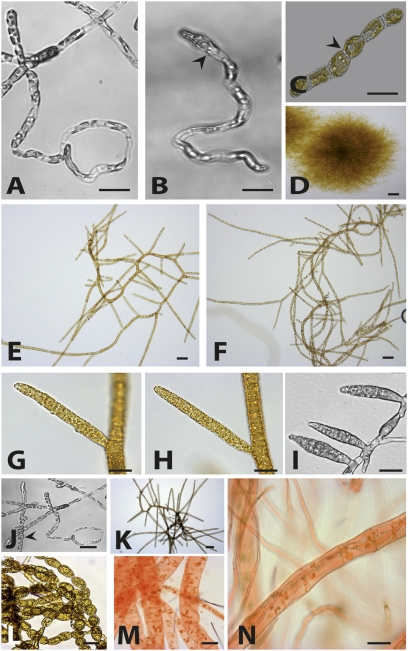Fig. 1.
oro mutant parthenotes closely resemble wild-type gametophytes. Representative images are shown. (A) Wild-type gametophyte germling (4 d old). (B) oro parthenote germling (4 d old). Note the asymmetrical first cell division (arrowhead). (C) Wild-type partheno-sporophyte germling (2 d old). Note the symmetrical first cell division (arrowhead). (D) Adult wild-type sporophyte (3 wk old). (E) Adult wild-type gametophyte (3 wk old). (F) Adult oro parthenote (3 wk old). (G) Plurilocular gametangium of a wild-type gametophyte. (H) Plurilocular gametangium of an oro parthenote. (I) Plurilocular sporangia of a wild-type partheno-sporophyte. (J) Round cells present during the early development of a few oro individuals (arrowhead). (K) oro individuals that had round cells during early development reverted to gametophyte morphology. (L) Wild-type partheno-sporophytes stained with Congo red (no red staining). (M) Wild-type gametophytes stained with Congo red (showing the characteristic red color). (N) oro individuals are Congo red positive. (Scale bars: 10 μm.)

